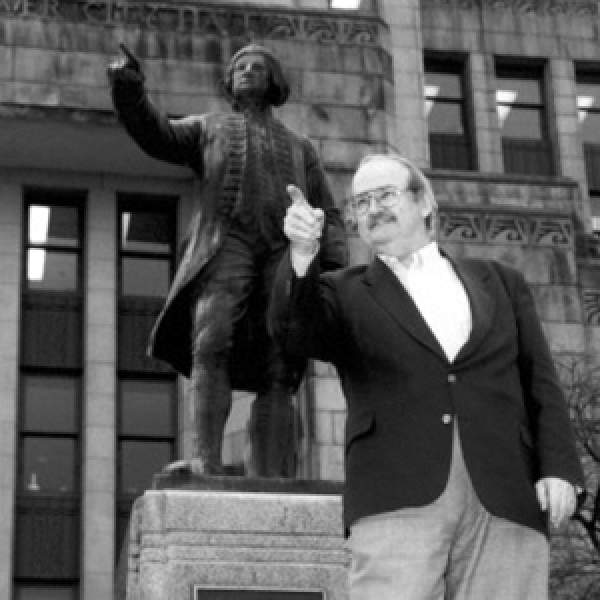History of Vancouver Foundries
Before Vancouver became the City of Glass, it was host to a strong industrial base—necessary in supporting industry and development throughout BC. Mining, fisheries and forestry were primary drivers of economic growth, and Vancouver’s location offered valuable access to both ocean routes and a newly completed Canadian Pacific Railway. Despite its advantages, however, the city remained isolated from other major economic centers. Even with the railway, it was expensive and time-consuming to ship equipment and supplies from Eastern Canada, the United States and Britain.
Foundries first appeared in Vancouver near the beginning of the 20th century, and they saw rapid growth over the course of several decades. While most castings from this era have been decommissioned over the years, many are still in use today. Walk down any street in Vancouver or the Lower Mainland, and you’ll encounter numerous drain covers, fire hydrants, lamppost stands and street bollards. Many of these public artifacts, examples of a once thriving base for cast metal manufacturing, still bear the marks of local foundries—some now defunct, but many still in operation.
New demand for cast metals
Metal casting is an ideal means for manufacturing machine parts and other industry tools. Metals such as malleable iron and steel are both strong and durable. When cast, they offer significant freedom in designing parts for new technologies and other innovations. The control of shape and form also makes casting ideal for decorative applications—which proved valuable for a young city looking to establish its own character.
In the latter half of the 19th century, strong economic growth led to significant demand for casting services in BC. The relative ease in setting up a basic foundry operation, however, meant there was always plenty of competition for new contacts and renewals.
A small foundry could essentially begin operations with a cupola furnace, a few basic tools, some scrap metal, sand and the means to develop basic patterns. Companies often engaged in bidding wars, undercutting services by pennies to secure work. It was common for small foundries to pop-up in Vancouver only to disappear within a few years after contracts ran their course. The foundries that survived were those that diversified their services for a broader customer base. Other foundries were created as in-house operations for large companies and engineering firms specializing in municipal development or shipbuilding.
While demand was always strong, the growth and fate of Vancouver’s cast metal industry has always been closely linked to the surrounding industrial economy and evolving technologies. As far as we can tell, the first foundries to arrive in BC came with the first big economic boom.
Gold rush years
BC’s earliest foundries opened not in Vancouver, but in Victoria. The first registered commercial foundry in Victoria was likely the Caledonian Iron Works, founded by a father and son from the Dougall family in 1858.
Since about 1849, Victoria was established as a trading post on Vancouver Island—a separate colony at the time—to support early commercial activity and coal mining operations by the Hudson’s Bay Company. When the first major gold rush hit in 1858, prospectors had to get their licenses in Victoria before venturing up the Fraser Valley. This made Victoria a vital source for services and supplies, and its population virtually exploded from 500 residents to nearly 20,000 that year.
The population boom brought new industry to Victoria. Many foundries opened to supply local engineering firms, shipbuilders and mining companies, but many closed once the gold rush faltered.
The boom-and-bust pattern repeated itself during the Cariboo Gold Rush in 1862 and other rushes throughout the province. But, while gold offered volatile prosperity, silver, coal and lead—and eventually copper, zinc and iron—it brought steadier, more resilient growth. By the turn of the century, there were more than 2,000 mining companies in BC. All of them required regular cast metal services for crushers, grinding balls, ore carts and other heavy machinery.
1886: Birth of a city
While the gold rush brought a huge influx of residents to the area, Vancouver didn’t officially incorporate as a municipality until 1886, replacing the township of Granville and other small settlements.
It was decided that Vancouver would be the terminus for the Canadian Pacific Railway, which linked Canada’s major economic centers to BC’s valuable resource base. The city was also an ideal location for port development, ocean trade, ship-building and fisheries. Along the Burrard Inlet, rail yards, industrial facilities, commercial spaces and housing sprung up rapidly—meaning the city needed to provide infrastructure by way of water supply, street lighting, transit and other industry needs. Many of these city projects spurred and supported new cast metal manufacturing companies.
Engineering firms were the first to open foundries, using them to service their own contracts and operations. These companies included the B.C. Iron Works and the Vancouver City Foundry and Machine Works in the mid-1880s. Both companies specialized in sawmilling, mining and marine equipment. Letson and Burpee Ltd. also began its operations early—beginning in New Westminster before moving to Vancouver in 1887 for the next 67 years. The company specialized in designing and patenting its own machinery for local industries—especially the fishing industry.
Fish Processing
Before overfishing and development issues affected the region, the Pacific Coast was home to an abundant resource of marine life that had supported Aboriginal populations for thousands of years. Traditional fish processing typically included drying, salting and smoking—but the arrival of Western-style methods brought the beginning of a major canning industry.
Canning had been used in Europe since the early 1800s and became popular in BC during its various gold rushes. Canned salmon was nutritious, compact, and lasted for long periods of time—making it ideal for prospectors living and working far from service stations. By the early 1900s, BC produced more than 837,000 cans of salmon per year. During the 1920s, this number increased to two million cans per year. At the height of the industry, there were 80 canneries operating 223 sites along the BC coast and along the Fraser River.
The cannery industry employed many seasonal workers in the region, but what contributed to its rapid growth, aside from high demand, was the development of efficient machinery—notably, the Smith Butcher Machine (also referred to as the “Iron Chink,” regrettably, after the typical Chinese laborers it replaced). A typical butcher cleaned and processed up to 2,000 fish in a 10-hour day. The Smith Butcher Machine, and the related Letson and Burpee Ltd. machine, could clean and process 22,000 fish in only nine hours. Letson and Burpee Ltd. used cast parts to manufacture the machine’s metal bearings, levers, feeder chains, gears, slitting knife and adjustable cutters.
World War I
While war raged around the world, the Canadian war effort brought good business to local foundries. There are records from World War I of major contracts for ship-building, shell casings and winches. When the war ended, however, many foundries struggled to shift their services to other industries, and many closed their doors or consolidated with other companies. Still, with the rapid increase in the natural resource industries, new companies continued to open, and between 1910 and 1929 more foundries began operations in the province than any other time.
Forestry Mechanization
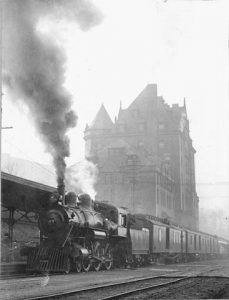
Perhaps the largest, most lasting, development in BC was the rise of lumber operations throughout the province. While it has seen many ups and downs, forestry still remains the province’s largest industry. Its first significant expansion began in the 20th century when BC lumber became popular worldwide. By 1917, BC produced more lumber than any other Canadian province, and by the 1920s it produced half of all Canadian lumber—while also employing an estimated 25 percent of all BC males.
Major growth meant that new logging camps and sawmills required saws, axes, winches, hauling equipment and other tools to cut down and transport large caches of cedar and Douglas fir. Technology was a major factor that helped increase access to forested areas and improve productivity.
The steam donkey, or donkey engine—essentially a steam-powered winch, or yarder—was especially valuable to early loggers, as it could haul heavy loads across difficult terrain and onto transport vehicles. It could also be moved relatively easily, allowing large-scale operations to venture deeper into wooded areas—beyond the reach of rail or waterway access.
Eventually, when logging trucks were available, extensive road building brought lumber harvesting into virtually all regions of the province. Unfortunately, as transportation became cheaper and more efficient, it became more convenient to ship equipment and service supplies from other parts of the continent, making the region less reliant on its foundries.
Industry fluctuations also made for difficult times. During The Great Depression, when municipalities and provincial companies were forced to tighten budgets and reduce costs, foundries faced major challenges, and several had no choice but to close. Those that survived secured contracts with major public works programs geared at improving local transportation. The Lion’s Gate Bridge project kept several local foundries in business, and many of its original castings are still in place today.
World War II
When World War II broke out in 1940, foundries were again called upon to provide castings for large-scale military projects. The Burrard Dry Dock Company on Vancouver’s North Shore was commissioned to build 10,000-ton Victory ships—the Canadian equivalent to US-built Liberty ships. Throughout the course of the war, the company produced more than 100 freighters—all of which required extensive sourcing from Vancouver foundries.
During the war, the government officially declared metal casting an essential service, which exempted foundry workers from military recruitment. Many men went to war anyway, and women were hired to fill their shoes. Foundries implemented round-the-clock shifts to fulfill war-oriented contracts while also supplying local businesses. The high rates of production and specialized applications led to new innovations in manufacturing lighter materials—especially for new technologies such as sonar. When the war came to an end, however, this again led to the shutdown of many foundries as they struggled to replace the evaporated military contracts.
Public Art in Vancouver
During the 1960s, a surge of development ushered more demand for public art. Jack Harman, and eventually his son Stephen Harman, operated the Harman Sculpture Foundry, which cast several iconic artworks in cities across Canada.
Using the lost-wax technique, they designed works such as the “Miracle Mile” and the “Family Group” statues in Vancouver.
They also cast the work of other artists, including Bill Reid’s “Mythic Messengers” for the Museum of Civilization, Etunget’s “Bird of Spring” at Robson Square and John Hooper’s “Terry Fox” in Ottawa.
Foundry Decline
As the province matured throughout the 20th century, road and bridge building opened more opportunities for resource extraction—especially in developing new facilities for the oil and gas sectors. The rise of print and newspaper publications also created more demand for paper products, which brought more sawmills and pulp mills. BC Ferries officially formed in 1958 and major dam projects would eventually be underway to provide a new source of economical energy.
While the province evolved, however, BC’s foundry industry began its gradual decline. Global transportation systems became more efficient and cost-effective—opening up trade with newly industrialized countries. Products could be sourced overseas for a fraction of local prices, making it nearly impossible for foundries to compete in Canada.
It wasn’t long before only a handful of casting services were left—and many shut down their in-house operations in favor of outsourcing overseas. Today, while few foundries provide in-house services, many still offer a high level of expertise in sourcing and directing commercial production.
Reliance Foundry
Reliance Foundry has a long history in BC—from its first location in Vancouver to its current operations in Surrey. Originally incorporated by four foundry workers in 1925, its family legacy began its course when Fred Done was commissioned to build a one-ton furnace for Reliance Foundry in 1927. Fred continued to work for the company and eventually bought into it in 1936, where he entered a two-man partnership with one of the original founders. The partnership lasted until he took sole ownership in 1943.
Fred is now two generations removed from the current owners of Reliance Foundry, Brent and Brad Done. The brothers inherited the business from their father, Brian Done, who ran the company with his brother, Barry, for 37 years.
As the company evolved, it always maintained a strong connection to its historical roots. As a testament to its history and experience in the commercial casting industry, many of Reliance Foundry’s bollards maintain an appeal to historic architecture and urban design.
Sources
- Bromley, Henry. Fire in the Blood. Asterisk Communications: Vancouver, BC, 1995.
- Encyclopedia of BC. “Iron Chink.” KnowBC.com
- Encyclopedia of BC. “Salmon Canning.” KnowBC.com
- Encyclopedia of BC. “Mining.” KnowBC.com
- Encyclopedia of BC. “Logging.” KnowBC.com
- Ettya, Aviv, Arthur Green, Siobhán McPhee, Britta Ricker and Cristina Temenos. British Columbia in a Global Context. Geography Open Textbook Collective: Vancouver, BC, 2014.
- Oregon Encyclopedia. “Donkey engine.” OregonEncyclopedia.org
- Wynn, Graeme. “Timber Trade History.” The Canadian Encyclopedia. Updated March 4, 2015.
Images
- Canadian Pacific Railway construction in BC, 1881: Public domain
- Vancouver rail station, 1911: Public domain
- Smith Butcher Machine cleaned and processed 22,000 fish per day: Public domain
- Plaque presented to Burrard Dry Dock to commemorate production of its 100th Victory ship: Reliance Foundry
- Jack Harman’s Bannister and Landy casting in Vancouver: Paul Joseph, CC by 2.0, via Flickr
- The original Reliance Foundry location: Reliance Foundry

![Mainland Foundry Company [CVA 1376-237]](https://vancouverhistory.ca/wp-content/uploads/2021/01/c04deb59-fea2-41c6-bf0b-c1f9c3e6c429-A42214-800x445.jpg)
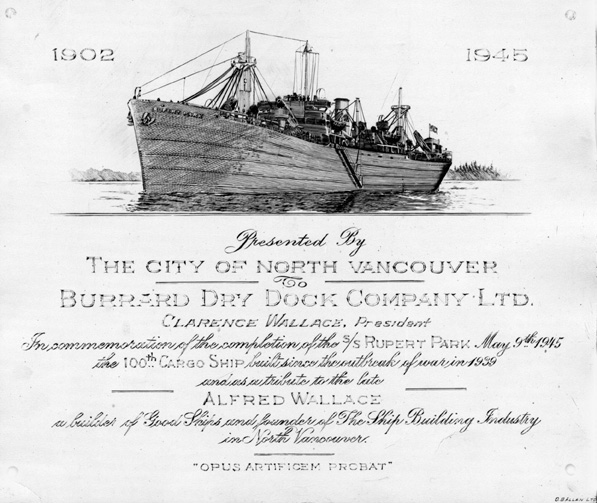
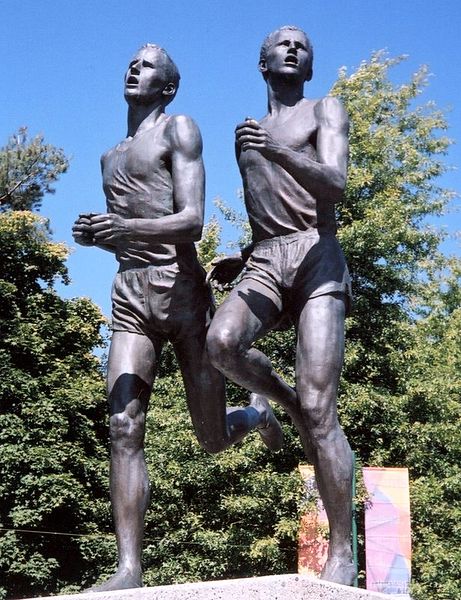
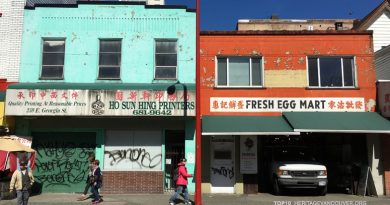
![Red Robinson [Photo: redrobinson.com]](https://vancouverhistory.ca/wp-content/uploads/2021/01/red_72_0040-390x205.jpg)
